Join Me in Egypt And/Or Jordan - Spring 2026
/The Pyramids
Nile Cruise
Incredible Hotels
Amazing Guides
Petra
Wadi Rum
Jerash
Just a few of the amazing locations we will visit as we travel through these countries.
Early March 2026

The Pyramids
Nile Cruise
Incredible Hotels
Amazing Guides
Petra
Wadi Rum
Jerash
Just a few of the amazing locations we will visit as we travel through these countries.
Early March 2026



Attention nature lovers and photographers! Many of you have told us that New Zealand tops your travel list. Get ready to explore the South Island's breathtaking scenery with our upcoming photography workshop!
Imagine:
Spending a night on a stunning fjord, perfectly positioned for capturing mesmerizing sunrise photos.
Watching the sunset paint the Remarkable mountains above Queenstown in vibrant hues.
Photographing the Milky Way under the inky-black, star-studded skies of Aoraki / Mount Cook National Park.
These are just a glimpse of the unforgettable experiences we have planned for you in this intimate, small-group workshop. Join us and capture the magic of New Zealand's South Island!
Probable Dates - Early November, 2025 - timed for lovely summer weather on the South Island.
The South Island of New Zealand is a photographer's paradise for several reasons:
Diverse and dramatic landscapes:
Mountains: Rugged Southern Alps, snow-capped peaks like Aoraki/Mount Cook, dramatic rock formations like Mitre Peak in Milford Sound.
Lakes: Crystal-clear glacial lakes like Tekapo and Pukaki, reflecting mountains and stars.
National Parks: Diverse ecosystems offering unique landscapes like Franz Josef Glacier, Punakaiki Pancake Rocks, and glowworm caves.
Additionally, a well-developed road network makes most areas easily accessible. Guided tours, activities, and photography instruction will cater to photographers of all skill levels. 4 & 5 star accommodations.
Whether you're a seasoned landscape photographer or just starting out, the South Island of New Zealand offers endless possibilities to capture stunning and unique images.


Scroll down for recommendations
Head Type - Ball Head - these are the most common and the most versatile. All of the recommended tripods below are ball heads. If shooting video AND you need to pan during the shoot you could consider a fluid head tripod. Consider a geared head if you want incredibly precise movements but are willing to pay $$$ and you don’t mind a slower setup.
Plate Type - The two common types are Arca swiss and Manfrotto - Arca swiss is the most common type of tripod head/plate system which means if you are on a trip and forget your plate just about any camera store will carry a spare plate or if traveling with a photography workshop it’s likely someone else will have a compatible plate. Spare Arca Swiss Plates - Consider an L Bracket for easier vertical photography. I love my L bracket. Kirk, Really Right Stuff and Small Rig all make excellent L Brackets that are camera-specific. If you buy a tripod without a center column an L-Bracket becomes mandatory.
Leg Lock Type - Twist lock legs vs flip-lock. This can be a polarizing choice. I personally prefer twist lock, you twist a small section of the leg and the friction reduces allowing you to extend or contract the tripod legs. I find twist legs to be more comfortable and pack-friendly but if you are not paying attention it is possible to over twist and have the legs fall apart. With a flip-lock, you flip a small lever open to extend and close to lock in place. On more travel-friendly tripods these little levers can be small and fiddly. They can also wear over time and require a tool to retighten.
Center Column - All tripods consist of 3 legs that you spread to create a stable platform. Many tripods offer a short center column that can extend up through the center to offer additional height. This makes height adjustments with this column very easy and provides flexibility to dial in the last few inches you need without adjusting each leg. But, it's rarely as stable as having the camera seated as close to the leg joints (some refer to this junction as the canopy). So I recommend you avoid using the center column unless necessary. Some tripods, including the ones I recommend below, don't offer a center column. This makes for a more packable and lightweight tripod with great stability but you do lose the flexibility of the ease of height adjustment and unless you are using an L bracket on your tripod it is much more difficult to shoot vertically. Some tripods offer an additional extension that screws in place. This isn't ideal. Pay attention when shopping - most max height stats are provided with the center column fully extended which again isn't the most stable.
Budget - There are loads of tripods that are cheaper than my budget pick but we have seen these show up on workshops and they rarely provide the stability you want from a tripod, that is the NUMBER ONE reason you buy a tripod. They also break faster and customer support/warranty service from many of these companies under $200 is nonexistent. The likelihood that you will be replacing one of these cheap tripods in just a few short years is high. Spend the money now to get a tripod that will last you.
The tripods I have listed below offer good heights while remaining travel friendly - fold down small enough to not be much taller than a backpack and they are fairly lightweight.
MeFOTO GlobeTrotter Aluminum Travel | Max Height 64” with the center column extended. Pack length just 16” | Weighs 4.6lbs $220 B&H Photo Link | Amazon Link $199
You might not feel that $200 is very budget-friendly but a tripod is one of those pieces of gear that you need to buy a well-built and from a reputable brand. I have used various versions of the MeFoto for over a decade and I have been very happy.
Leofoto LX-224CT Ranger Series Tripod and LH-30 Ball Head Kit | Max Height 43”, 51” with center column. Pack length 14.5” | Weight 2.47 lbs $289 B&H Photo Link | Amazon Link While this tripod is not as tall as the MeFoto above it is significantly lighter and packs down smaller. I own two Leofoto tripods and I have been happy. They are excellent value tripods. Like the feature set but want more height the LX-254CT is what I would recommend.
Gitzo GT2545T Series 2 Traveler Carbon Fiber Tripod with Center Ball Head - Max height 65” Packed Length 17.5” & Weight 4lbs B&H Photo Link | Amazon Link $789
At the higher end, you can usually save by buying legs and a head separately. Below are some excellent legs and separate heads that you can purchase. Note that all of the tripods above feature removable heads allowing you to upgrade at some point in the future if desired.
FLM CP30-S4 II 10X Carbon Fiber Series II | 53” max height | Pack length 18.9” & weighs 2.4lbs $459
B&H Photo Link | Amazon Link These are fantastic legs and nicely compromise length, weight and sturdiness Pair with LH-40(listed below) for a 3.4lb tripod that packs small and provides a study base.
Taller Legs -
FLM CP30-L4 II 10X Carbon Fiber Series II | 68.3” max height, pack length 23” & weight 3.1 lbs $505
B&H Photo Link | Amazon Link Same comments as the S4 above, just gets you taller.
Pair with Head -
Really Right Stuff BH-40 Ball Head with Compact Lever-Release Clamp | 18lb load capacity - $445
B&H Photo Link | Amazon Link
Or more budget-friendly head -
Leofoto LH-40 Low Profile Ball Head | 44Lb load capacity | 1.1lb $179 B&H Photo Link | Amazon
A new style of McKay Photo Workshops
Join MPA instructors Toby Gelston and Frank Stelges in beautiful Sedona, Arizona for our first Photo Bootcamp! Highlights include small group size (10 participants), stunning landscapes, daily challenges, critiques, classroom time, and astrophotography opportunities.
Registration Opens January 1st, Would you like me to reserve you a spot? Just add your name to the form below.
Press Blurb - The FE 300mm F2.8 G Master OSS lens boasts high depiction performance and rapid, precise AF (autofocus) – hallmarks of the G Master series. Weighing approximately 1470g (excluding tripod mount), its lightweight design and superb weight balance facilitate handheld shooting, capturing dynamic moments in sports or nature with precision. When paired with the newly launched Alpha 9 III full-frame camera, it enables high-speed continuous shooting with AF/AE tracking up to 120 frames per second. For those seeking extended reach, it's also compatible with an optional teleconverter, allowing shots in the telephoto range of up to 600mm.
Preorder Now from B&H Photo $5,999- Shipping Spring 2024
Toby’s Take -
A few photos with the 300mm f/2.8 and Sony a9iii - Click for larger size.
I had an amazing experience shooting with the new 300mm f/2.8 lens this afternoon. I was pleasantly surprised by how lightweight it is, making it easy to handhold. It weighs the same as the original 70-200 f/2.8 GM lens and has a nice balance to it. The autofocus when using the new a9iii and my a1 camera was incredibly fast, and the image quality was outstanding right out to the corners. I also tested it with a 1.4x extender, which turned it into a 420mm f/4 lens, and the results remained excellent. Although I didn't test it with a 2x extender, I've heard that both the image quality and autofocus speed remain excellent. The 2x turns it into a 600mm f/5.6 lens.

Compared to the FE 400mm f/2.8 GM OSS, this lens is around 50% lighter and 43% smaller.
Preorder Now from B&H Photo $5,999- Shipping Spring 2024
Sony has just announced the a9iii - this is their 24mp sports and wildlife focused line and when the a9 was announced was ground breaking with it’s speed, fps and AF system. The a9iii has a global shutter, the first in a full frame mirrorless camera. I already wrote a quick blog post about why a global shutter is a big deal. In short - it allows ridiculously fast shutter speed and flash sync speed up to 1/80,000 second.
Preorder from B&H Photo - $5,999 - Shipping Spring 2024
The Basic a9iii Specs -
24.6MP Full-Frame Global Shutter Sensor
Up to 120 fps Cont. Shooting with AF/AE
Pre-Capture Function & Speed Boost Button
Flash Sync at up to 1/80,000 Sec.
4K 120p 10-bit Video; S-Log3 & S-Cinetone
759-Point Phase-Detect AF with Tracking
8-Stop 5-Axis In-Body Image Stabilization
9.44m-Dot EVF with 240 fps Refresh Rate
3.2" 2.1m-Dot 4-Axis Touchscreen LCD
Dual CFexpress Type A/SD Card Slots
Quick Thoughts after having my hands on the camera for a morning of shooting - Redesigned grip with a little more to get your hand around feels great. The new shutter button design feels more responsive. The a9iii now has the fully flip-articulating screen found on the Sony a7Rv which is excellent and gives you the best of both a tilting screen and a fully flip-out screen. The drive mode dial is now lockable at * which then provides drive mode control through the menu system, something I have desired on my a1 for a while. Another nice quality-of-life improvement is in the customization menu you can press the desired button and be instantly presented with the assignable functions available to that button - no more hunting through all the buttons to find the one you want to customize.
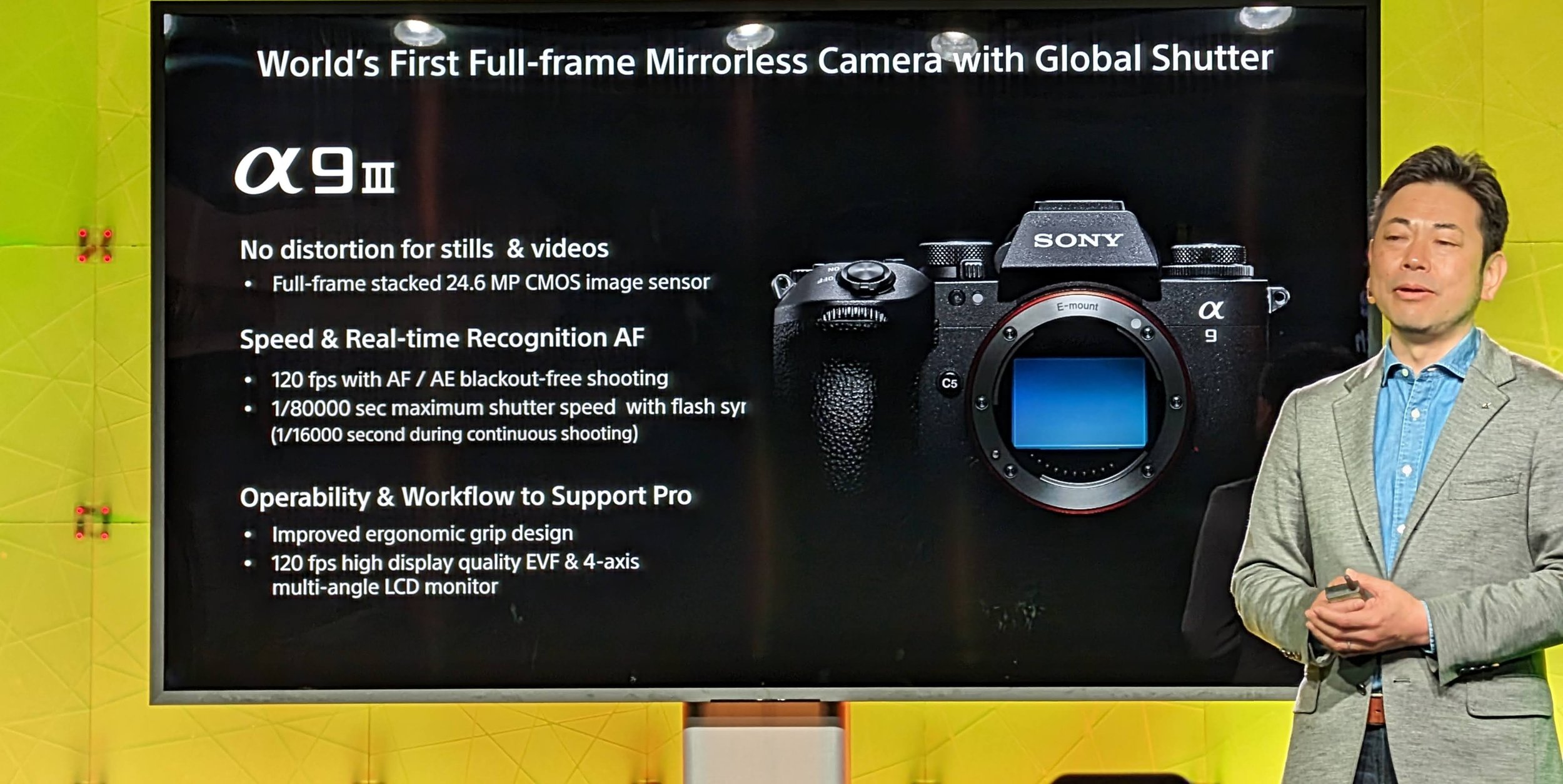
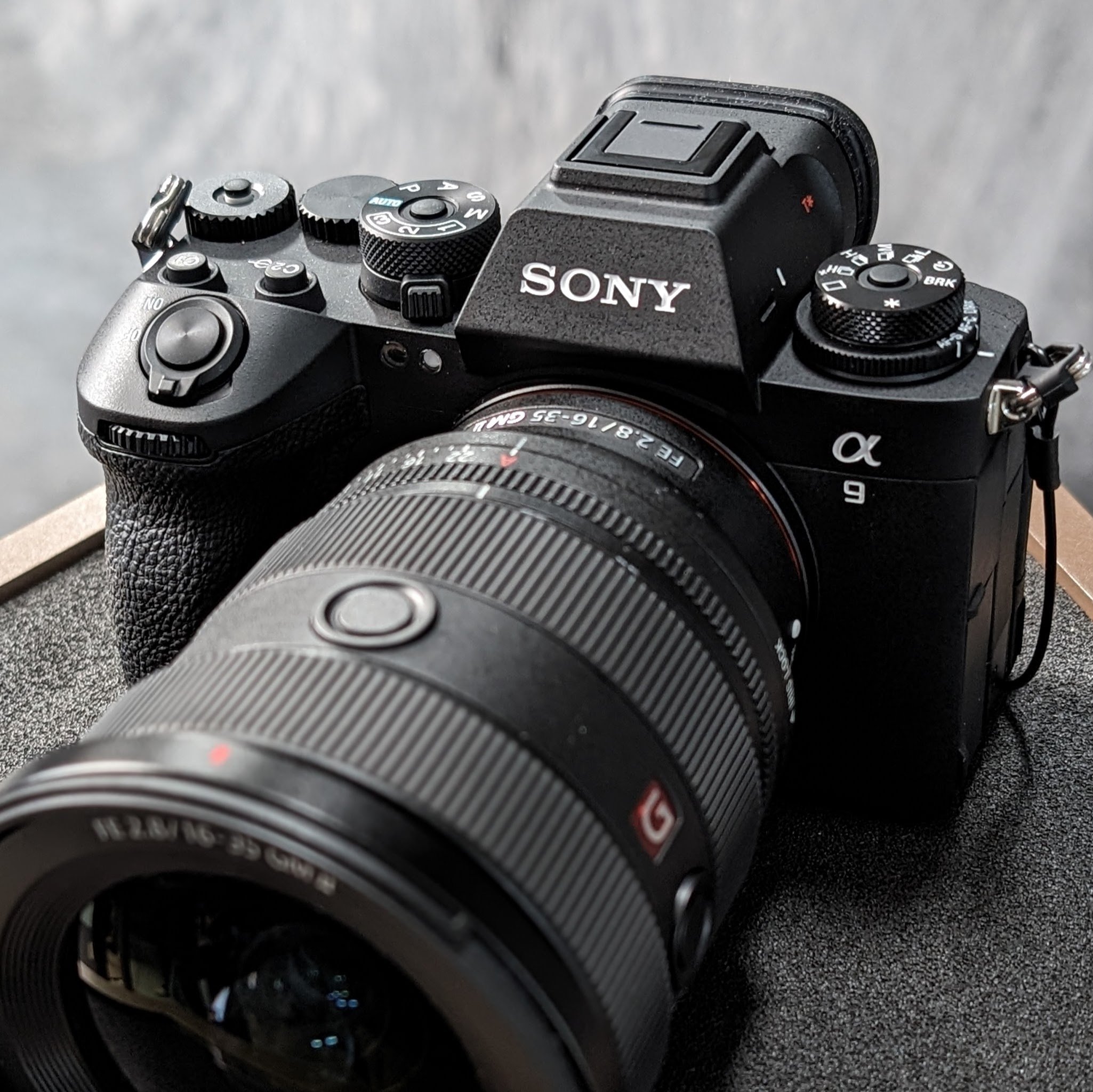
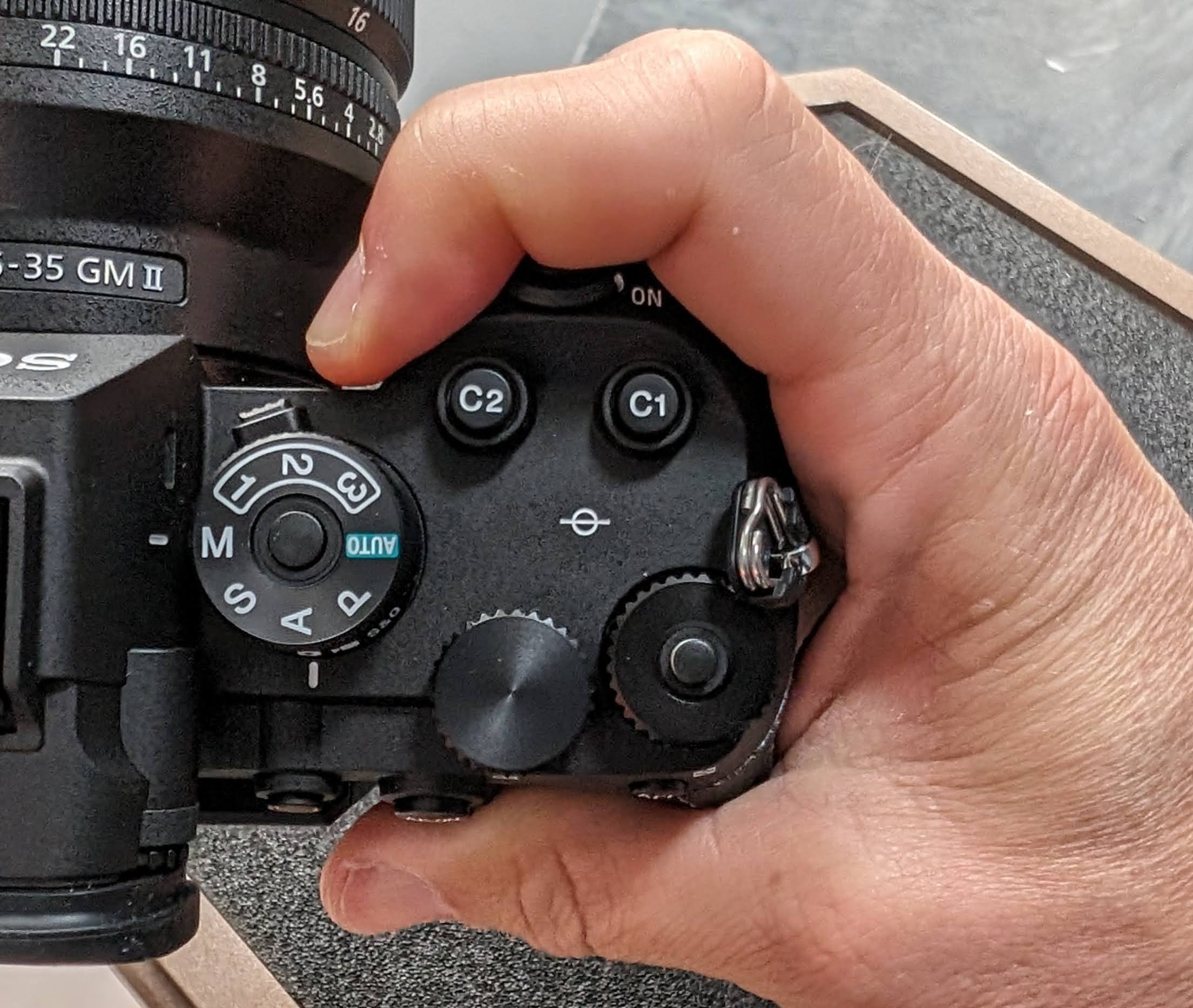
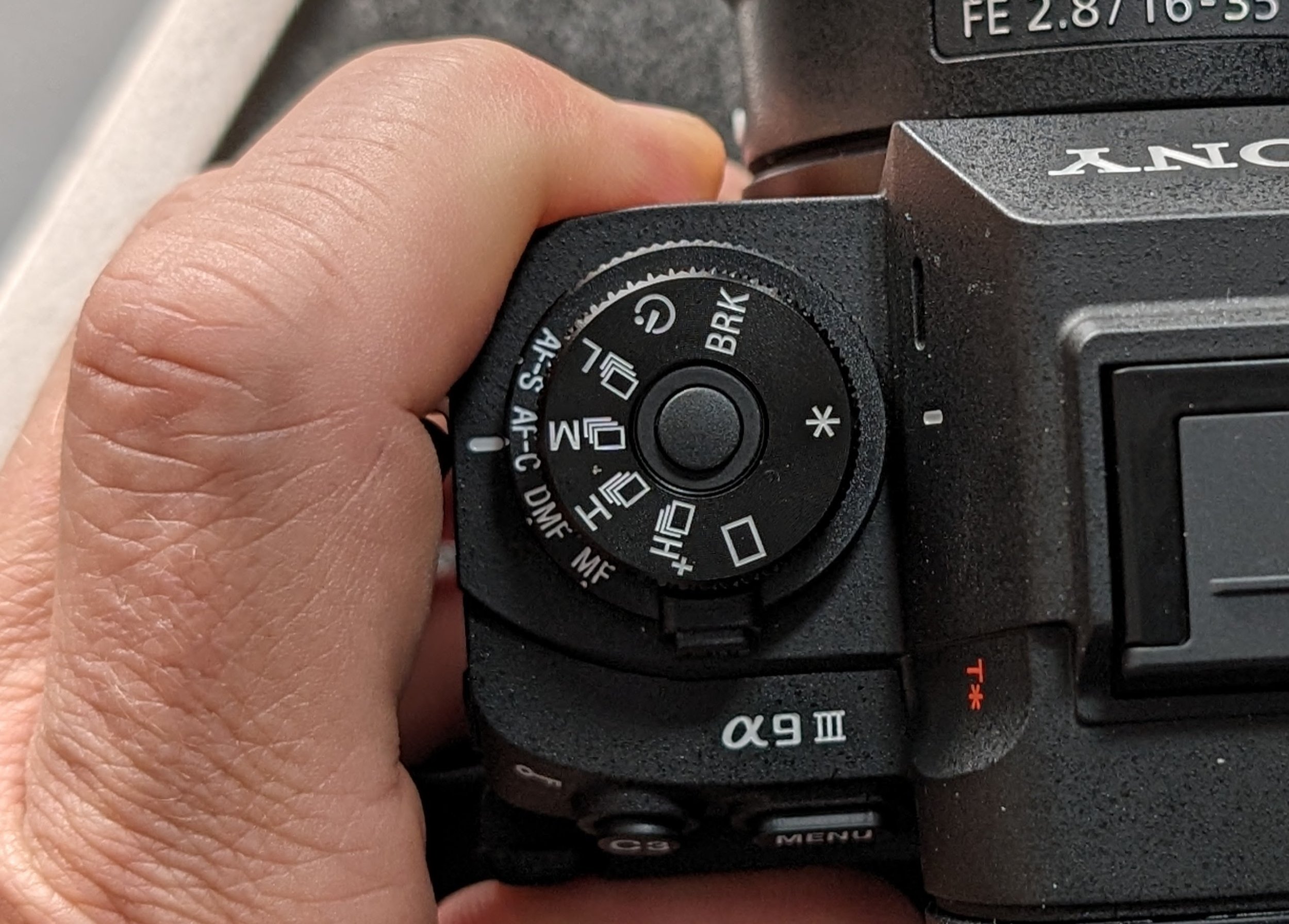
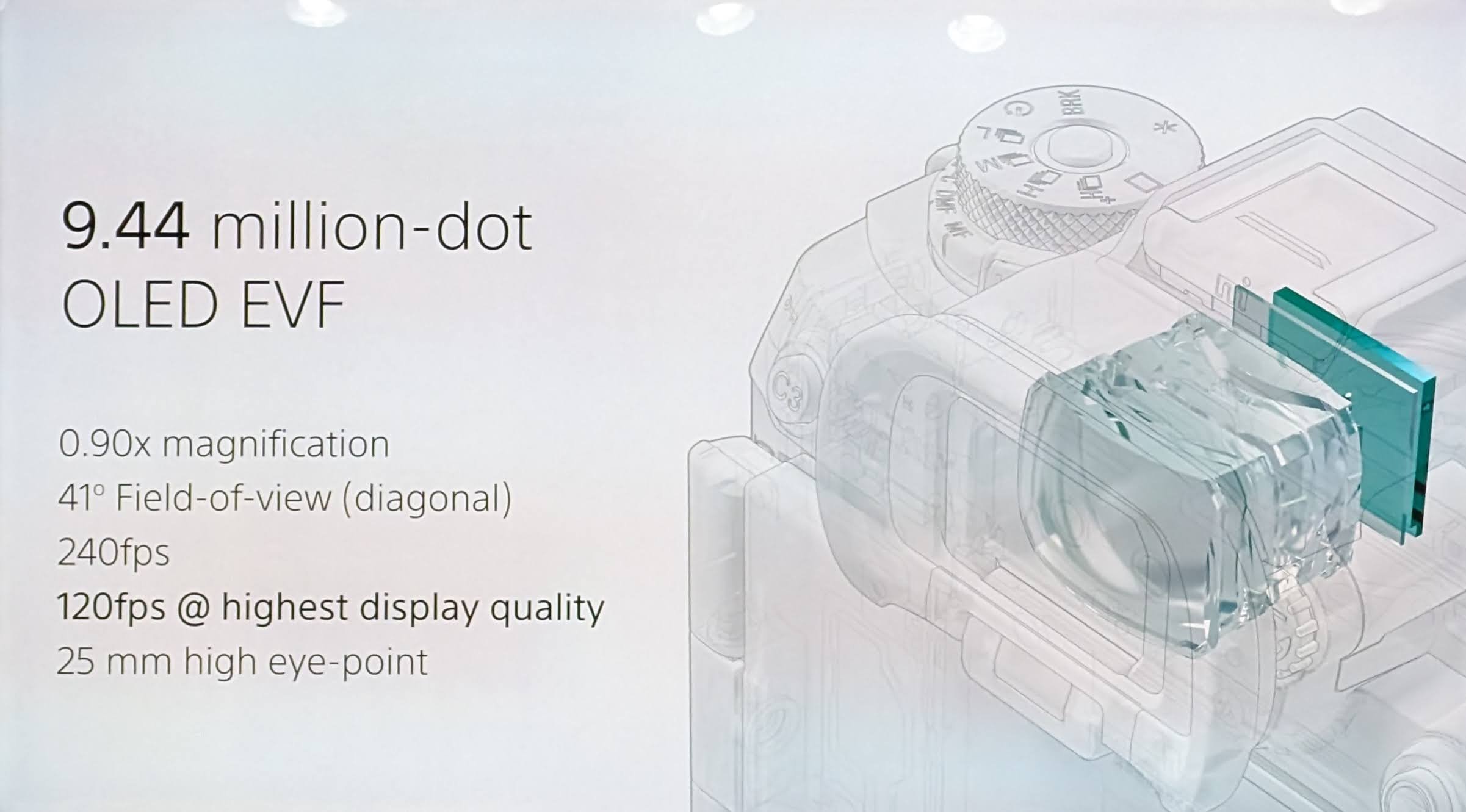

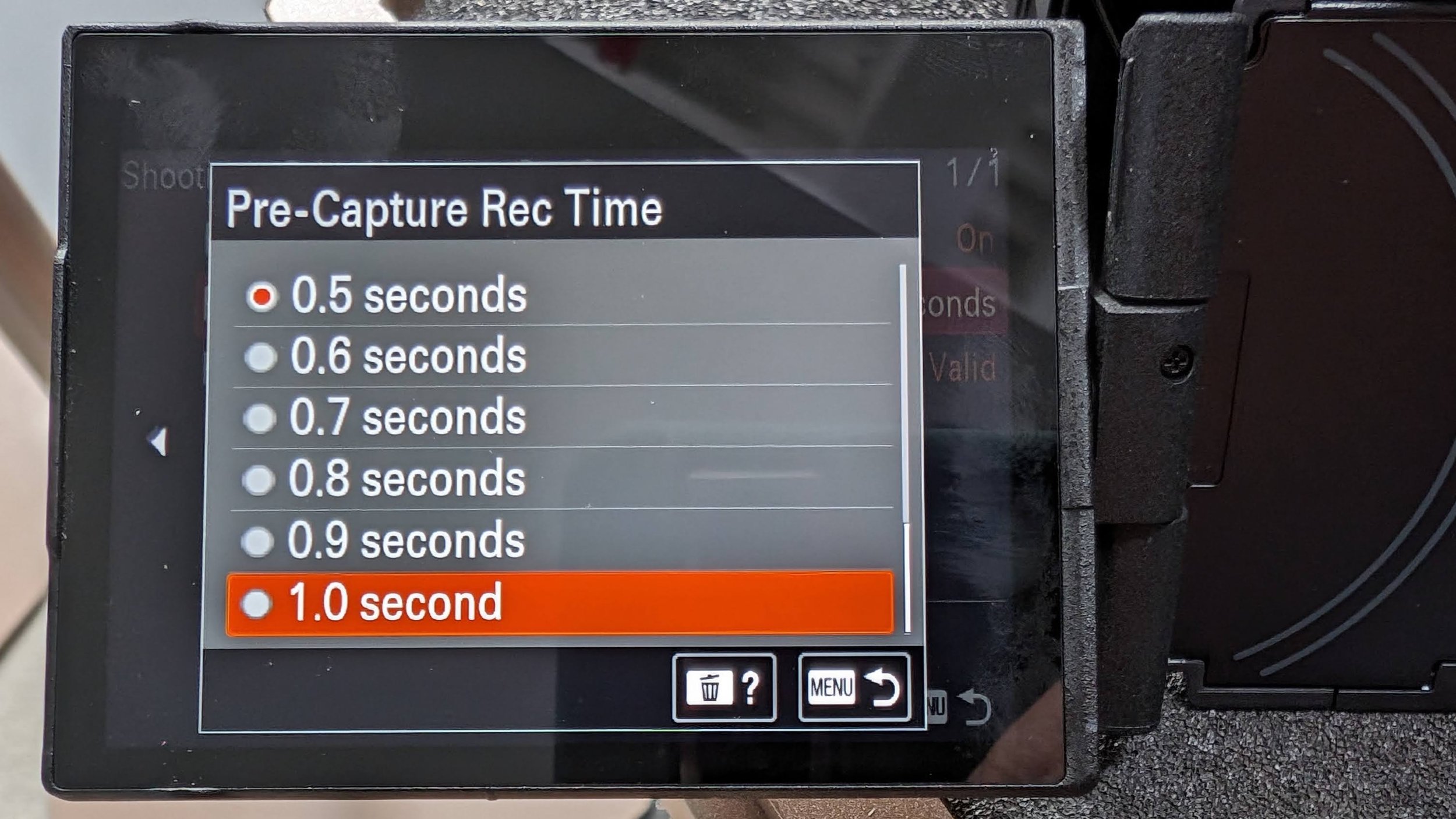
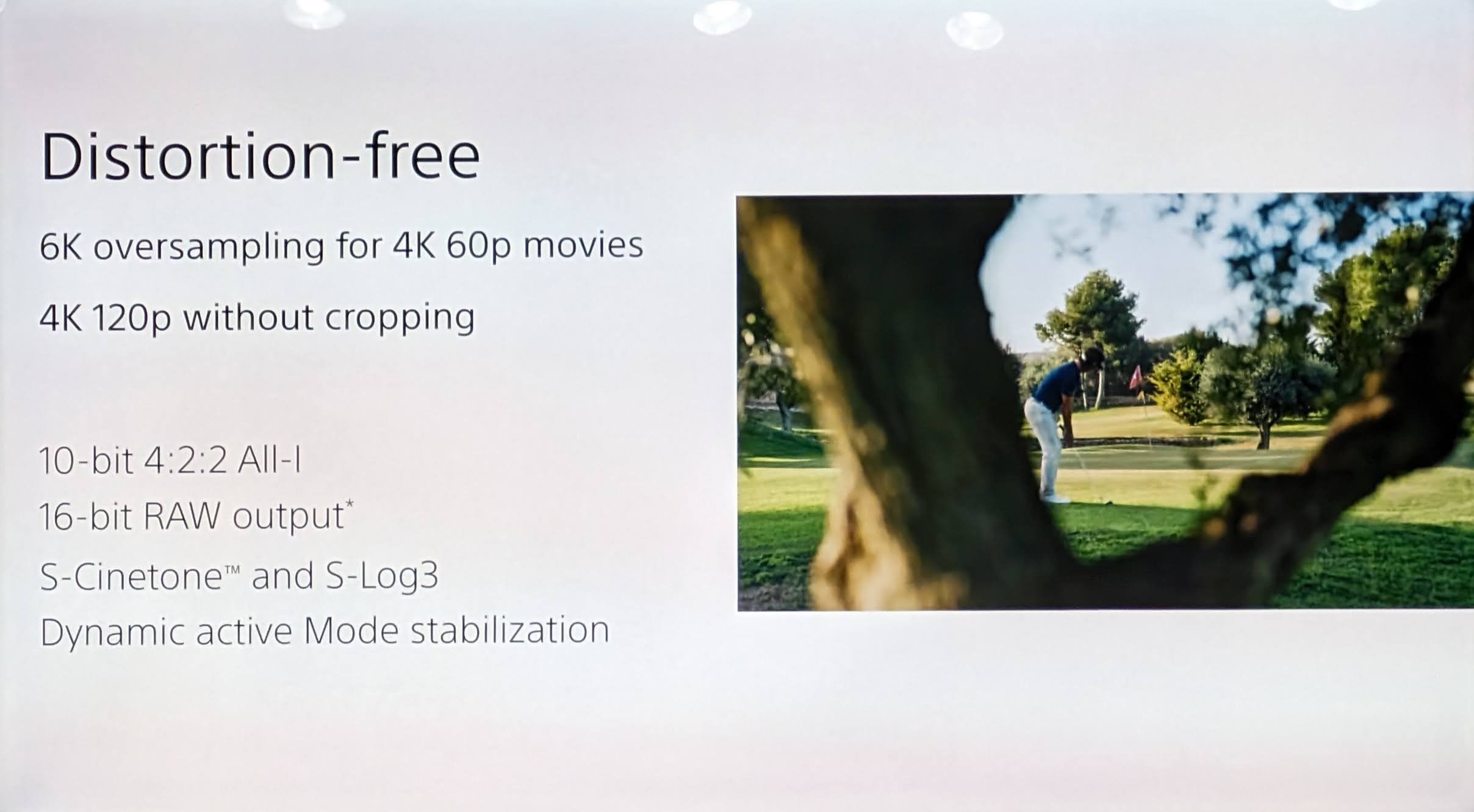
Preorder from B&H Photo - $5,999 - Shipping Spring 2024
Imagine you're taking a picture of a fast-moving subject, such as a car racing or a ball being thrown. With a regular camera, the sensor captures the image line by line, from top to bottom. This is like reading a book one line at a time. By the time the camera finishes reading the bottom line, the subject might have moved, causing the image to appear distorted.

A global shutter, on the other hand, is like taking a snapshot with an old-fashioned film camera. All the pixels on the sensor are exposed at the same time, capturing the entire scene in an instant. This prevents distortion caused by movement, especially when photographing fast-moving objects or scenes with rolling lines, such as a propeller.
With a global shutter, the entire image is captured at once, so there's no distortion, even if there's movement during the exposure. This is why global shutters are essential for high-speed photography, sports photography, and situations where precise timing is crucial. Global shutters also provide higher flash speed sync which can give portrait photographers more control.

Flash sync speed is the fastest shutter speed your camera can use with a flash without causing black bands or uneven exposure in the image. This is because the flash emits a burst of light very quickly, and if the shutter is still moving when the flash fires, only a portion of the sensor will be exposed to the light.
Here's why flash sync speed is important:
Freezing motion: When photographing fast-moving subjects, like athletes or dancers, you need a fast shutter speed to freeze the action and prevent blur. However, if your shutter speed is too fast, it may exceed your camera's flash sync speed, resulting in black bands or uneven exposure.
Controlling ambient light: In bright outdoor conditions, you may want to use a flash to fill in shadows or balance the exposure. However, if your shutter speed is too slow, the ambient light will also contribute to the exposure, potentially overexposing the image. A faster flash sync speed allows you to use a faster shutter speed to reduce the impact of ambient light.
Creative effects: Sometimes, you might intentionally use a slow shutter speed with a flash to create creative effects, such as blurring motion or adding light streaks. However, if your camera's flash sync speed is too slow, you may not have the flexibility to achieve these effects.
The New Sony a9iii offers flash sync speed to 1/80,000 second because it offers a global shutter.
RF 24-105mm f/2.8 L IS USM Z. This lens weighs in at 3lbs and costs almost $2,999 but gives you a constant f/2.8 aperture across that wide range. The Z means it is compatible with power zoom accessories showcasing that this is a lens as much designed for video as photos. For many event and wedding pros this could replace several prime lenses.
Preorder Now- B&H Photo- Est. Ship Date: Thu Dec 14
The new Canon RF 24-105 f/2.8 L IS USM Z lens is a versatile zoom lens that is ideal for a wide range of photography genres, including portraiture, landscape, and travel photography. It features several new features that make it one of the most advanced zoom lenses on the market, including:
Power Zoom: The RF 24-105 f/2.8 L IS USM Z is the first Canon RF lens to feature a power zoom. This allows for smooth and precise zoom control, both during still photography and video recording.
Image Stabilizer: The RF 24-105 f/2.8 L IS USM Z features a built-in image stabilizer that provides up to 5.5 stops of shake correction. This makes it easy to capture sharp images and videos, even in low-light conditions.
Optical Design: The RF 24-105 f/2.8 L IS USM Z features a new optical design that includes four ultra-low dispersion (UD) elements and three aspheric elements. This helps to reduce chromatic aberration and distortion, ensuring that images are sharp and clear throughout the zoom range.
Fast and Accurate Autofocus: The RF 24-105 f/2.8 L IS USM Z features a Nano USM motor that provides fast and accurate autofocus performance. This makes it easy to track moving subjects, even in low-light conditions.
In addition to these new features, the RF 24-105 f/2.8 L IS USM Z also inherits a number of features from other L series RF lenses including weather sealing, a focus limiter switch, and a control ring that can be customized to different functions.
Overall, the Canon RF 24-105 f/2.8 L IS USM Z is a powerful and versatile zoom lens that is ideal for a wide range of photographers. It is the perfect choice for anyone who wants a high-quality lens that can do it all as long as you are willing to pay and carry a 3lb lens in your bag.
The new Canon RF-S 10-18mm f/4.5-6.3 IS STM lens is an ultra-wide zoom lens that is designed for APS-C sensor cameras. It is one of just a few RF-S lenses designed specifically for their new mirrorless APS-C cameras:
Compact and lightweight design: The RF-S 10-18mm lens is incredibly compact and lightweight, making it easy to carry around with you all day long. It is also retractable, which makes it even more portable.
Image stabilizer: The RF-S 10-18mm lens features a built-in image stabilizer that provides up to 4 stops of shake correction. This makes it easy to capture sharp images and videos, even in low-light conditions.
STM autofocus motor: The RF-S 10-18mm lens uses an STM autofocus motor, which is known for its smooth and quiet operation. This makes it ideal for both still photography and video recording.
New optical design: The RF-S 10-18mm lens features a new optical design that includes three PMo aspheric lenses and one UD lens. This helps to reduce chromatic aberration and distortion, ensuring that images are sharp and clear throughout the zoom range.
Overall, the Canon RF-S 10-18mm f/4.5-6.3 IS STM lens is a great choice for APS-C sensor camera users who are looking for a compact and lightweight ultra-wide zoom lens with excellent image quality. It is also a very affordable lens, making it a great value for the money.
Canon RF-S 10-18mm f/4.5-6.3 IS STM Lens (Canon RF)
$329.00
Est. Ship Date: Mon Dec 4
Preorder Now from B&H Photo
We had five nights of excellent aurora while in Greenland. I captured nearly 4,000 photos of Aurora over 5 nights and edited it down to this short video. All of these clips were shot from a moving ship with exposures between 1 and 3 seconds. Captured while leading a Greenland workshop for McKay Photography Academy on the M/V Sea Spirit - Poseidon Expeditions
Canon has just unveiled three new lenses, including the 200-800mm f/6.3-9 lens. I expect the 200-800 to be extremely popular due to its remarkable zoom capabilities and affordable price of $1899. The new lens offers a massive zoom range in a relatively portable package weighing just 4.5 lbs. Although it is not part of Canon's L class lens series, it is designed with a heat countermeasure by painting it white, which helps to regulate temperature when shooting for long periods in the hot sun. Furthermore, the lens is weather-resistant. The IS (image stabilization) system of the lens provides an impressive 5.5 stops of stabilization at 800mm, ensuring sharp and steady images. While the aperture may not be particularly fast throughout the entire zoom range, advancements in modern cameras such as high ISO performance and noise removal software, along with the capable IS system, mitigate this concern. Additionally, the lens is compatible with Canon's RF Teleconverters 1.4x and 2x, allowing for even longer focal lengths ranging from 280mm to an incredible 1600mm with the 2x, which is a dream combination for moon photographers.
Preorders are live, shipping Dec 14th, 2023
Canon 200-800 f/6.3- 9 IS USM $1899

Canon 100-400 RF at 400mm f/11 1/1640 - Even at f/11 good background seperation
Preorders are live, shipping Dec 14th, 2023
Canon 200-800 f/6.3- 9 IS USM $1899
ThinkTank Photo has just released NEW Cable Management pouches - Now with more size options, additional features, better organization, and greater capacity; Think Tank Cable Management pouches keep your cables and other small items contained and easy to access.
Clear front and back panels make it easy to see what’s inside so you can find what you’re looking for quickly. A wide opening, zippered top provides rapid access to contents inside while a fold-away main compartment divider enables better organization for all the contents inside.

New ThinkTank Photo Cable Management Pouches
CABLE MANAGEMENT™ 5 - $19.75
CABLE MANAGEMENT™ 10 - $24.75
CABLE MANAGEMENT™ 20 - $28.75
Learn more on ThinkTank Photo’s Website.
TAMRON lens firmware update improved
AF tracking performance and AF Assist function
35-150mm F/2-2.8 Di III VXD (Model A058)
28-200mm F/2.8-5.6 Di III RXD (Model A071)
October 25, 2023, Commack, NY – Tamron announces a new firmware update scheduled on October 26, 2023, for TAMRON 35-150mm F/2-2.8 Di III VXD (Model A058) and 28-200mm F/2.8-5.6 Di III RXD (Model A071) for Sony E-mount.
With this new firmware update, the AF tracking performance has significantly improved, and will now keep good track of a moving object. Also, AF Assist function during video recording is now supported.


Note:
1 Only Sony camera models with AF Assist function are supported.
2 TAMRON Lens Utility download page: https://www.tamron.com/global/consumer/support/download/lensutility/
DJI’s AIR 3 was recently announced - for most beginner drone pilots my pick remains the Mini 3 Pro as the drone to buy but, if you have been flying that drone for a while and have felt limited or plan to fly in windier conditions - the Air 3 offers some advantages and a nice bonus - a dual camera system with a 70mm lens in addition to the standard 24mm-ish wide view typically found on drones. 70mm might not sound like much but it provides a significant difference in the type of footage you are able to capture from a drone and your photos and video can look much more like you rented a helicopter. Both cameras use the same sensor size so the footage quality is excellent and matches as you switch between the two. Fun fact - this 70mm lens and sensor combo is the same as you get on the much more expensive Mavic Pro 3. You also get a drone that is as fast as the Mavic Pro 3, handles the wind and offers a newer transmission spec for increased range and a new remote that is even a little lighter than what is bundled with the Mavic 3 Pro. The only real downsides - The Air 2s provided a 1” sensor, the Air 3 returns to the smaller 1/1.3” sensor ( more similar to your smartphone sensor) but it does provide the two sensors and two focal lengths. You also have a much newer sensor in the Air 3 and all comparison I see show an AIR 3 providing excellent image quality. The other downside is the price has increased. The Fly More bundle is now $1549.
One more neat feature for travelers when you are away from a power source - stick 3 batteries in the multi-charger and the lowest two will start to charge the 3rd. I often land with 20% battery - it is the safest way to fly - and now being able to use that 20% to charge up the 3rd is smart!
I will have a complete pros/cons list out soon - if you ever have any drone questions feel free to just reach out. I am FAA 107 certified and I have been flying drones for almost a decade now -Does anyone remember the 3D Robotics drone? Yes - that was my first :) I have flown everything from the mini to the Inspire and I can help you decide which drone is right for you.
| DJI Mavic 3 Pro | DJI Mini 3 Pro | DJI Air 3 | |
| BUY LINKS -> | DJI Mavic 3 Pro | DJI Mini 3 Pro | DJI Air 3 |
| Starting Price | $2,199 | $759 | $1,099 |
| Takeoff Weight | 958 g | < 249 g | 720 g |
| Max Flight Time | 43 mins | 34 minutes (with Intelligent Flight Battery) 47 minutes (with Intelligent Flight Battery Plus) |
46 mins |
| Max Flight Distance | 28 km | 18 km (with Intelligent Flight Battery) 25 km (with Intelligent Flight Battery Plus) |
32 km |
| Max Ascent Speed | 8 m/s | 5 m/s | 10 m/s |
| Max Descent Speed | 6 m/s | 5 m/s | 10 m/s |
| Max Horizontal Speed (at sea level, no wind) | 21 m/s | 16 m/s | 21 m/s |
| Max Takeoff Altitude | 6,000 m | With Intelligent Flight Battery: 4,000 m With Intelligent Flight Battery Plus: 3,000 m |
6,000 m |
| Max Wind Speed Resistance | 12 m/s | 10.7 m/s | 12 m/s |
| Operating Temperature | -10° to 40° C (14° to 104° F) | -10° to 40° C (14° to 104° F) | -10° to 40° C (14° to 104° F) |
| Internal Storage | 8 GB | None | 8 GB |
| Image Sensor | Hasselblad Camera: 4/3 CMOS, Effective Pixels: 20 MP Medium Tele Camera: 1/1.3-inch CMOS, Effective Pixels: 48 MP Tele Camera: 1/2-inch CMOS, Effective Pixels: 12 MP |
1/1.3-inch CMOS, Effective Pixels: 48 MP | Wide-Angle Camera: 1/1.3-inch CMOS, Effective Pixels: 48 MP Medium Tele Camera: 1/1.3-inch CMOS, Effective Pixels: 48 MP |
| Lens | Hasselblad Camera: FOV: 84° Format Equivalent: 24 mm Aperture: f/2.8-f/11 Focus: 1 m to ∞ Medium Tele Camera: FOV: 35° Format Equivalent: 70 mm Aperture: f/2.8 Focus: 3 m to ∞ Tele Camera: FOV: 15° Format Equivalent: 166 mm Aperture: f/3.4 Focus: 3 m to ∞ |
FOV: 82.1° Format Equivalent: 24 mm Aperture: f/1.7 Focus: 1 m to ∞ |
Wide-Angle Camera FOV: 82° Format Equivalent: 24 mm Aperture: f/1.7 Focus: 1 m to ∞ Medium Tele Camera FOV: 35° Format Equivalent: 70 mm Aperture: f/2.8 Focus: 3 m to ∞ |
| Digital Zoom | Hasselblad Camera: 1-3× Medium Tele Camera: 3-7× Tele Camera: 7-28× |
4K: 2× 2.7K: 3× FHD: 4× |
Wide-Angle Camera: 1-3x Medium Tele Camera: 3-9x |
| Obstacle Sensing | Omnidirectional binocular vision system, plus an infrared sensor at the bottom of the aircraft | Forward, backward, and downward vision system | Omnidirectional binocular vision system, plus an infrared sensor at the bottom of the aircraft |
| Video Transmission System | O3+ | O3 | O4 |
| Remote Controller Live View Quality | 1080p/30fps, 1080p/60fps | 1080p/30fps | 1080p/30fps, 1080p/60fps |
| Max Transmission Distance (free of interference) | FCC: 15 km CE: 8 km | FCC: 12 km CE: 8 km | FCC: 20 km CE: 10 km |
| Max Transmission Distance (with interference) | Strong Interference: urban landscape, approx. 1.5-3 km Medium Interference: suburban landscape, approx. 3-9 km Low Interference: suburb/seaside, approx. 9-15 km Low Interference and Obstructed by Buildings: approx. 0-0.5 km Low Interference and Obstructed by Trees: approx. 0.5-3 km |
Strong Interference: urban landscape, approx. 1.5-3 km Medium Interference: suburban landscape, approx. 3-7 km Low Interference: suburb/seaside, approx. 7-12 km |
Strong Interference: urban landscape, approx. 1.5-4 km Medium Interference: suburban landscape, approx. 4-10 km Low Interference: suburb/seaside, approx. 10-20 km Low Interference and Obstructed by Buildings: approx. 0-0.5 km Low Interference and Obstructed by Trees: approx. 0.5-3 km |
| Battery Capacity | 5,000 mAh | Intelligent Flight Battery: 2,453 mAh Intelligent Flight Battery Plus: 3,850 mAh | 4,241 mAh |
| Charging Time | 96 minutes (using the included data cable of the DJI 65W Portable Charger) 70 minutes (using the DJI 100W USB-C Power Adapter and DJI Mavic 3 Series 100W Battery Charging Hub) |
Intelligent Flight Battery: 64 minutes (with the DJI 30W USB-C Charger and the battery mounted to the aircraft) 56 minutes (with the DJI 30W USB-C Charger and the battery inserted into the Two-Way Charging Hub) Intelligent Flight Battery Plus: 101 minutes (with the DJI 30W USB-C Charger and the battery mounted to the aircraft) 78 minutes (with the DJI 30W USB-C Charger and the battery inserted into the Two-Way Charging Hub) |
80 minutes (using the included data cable of the DJI 65W Portable Charger) 60 minutes (using the DJI 100W USB-C Power Adapter and Battery Charging Hub) |
| Compatible Remote Controllers | DJI RC-N1, DJI RC | DJI RC-N1, DJI RC | DJI RC-N2, DJI RC 2 |
ThankTANK has provided me with their EDC Tech 5, 10 and 20 pouches to giveaway. Watch the video below to see what I stuff in each of these awesome little organizers and enter to win your own set!
My EDC - Complete list
ThinkTANK Photo’s EDC Tech Pouches - https://bit.ly/3rTOmx6
Miisso 6,000 mAh Battery: https://amzn.to/3q4Mz7Z
Carabiners: https://amzn.to/3DxhIUU
Pixel Buds Pro: https://amzn.to/44UGTwo
Pixel Watch & Charger: https://amzn.to/3qaITl6
Burts Bees Chapstick: https://amzn.to/3Y7xYp2
Mckay Photography Lens Cloth: https://mckaylive.com/product-category/tours/
Small Pen: https://amzn.to/3YcP3hu
Garmin InReach Mini: https://amzn.to/470MbYZ
Lume Cube Flashlight https://amzn.to/3Dsy9Sp
Garmin Instict Watch: https://amzn.to/3KfYOFO
Aftershokz Headphones: https://amzn.to/454kFrs
Anker 20,000 mAh Battery: https://amzn.to/3Qf08fW
Knife: https://amzn.to/3Dxu9Qu
Recommended SSD Drive: https://amzn.to/47a58IA
SSD Pouch on Laptop: https://amzn.to/3qeI7n8
Quality USB-C Cables: https://amzn.to/3KfqNoW
Anker 65W GaN Charger: https://amzn.to/3OtTEIC
Apple Magsafe Cable: https://amzn.to/3OvRjgn
HooToo USB Hub: https://amzn.to/3OwMgw8
Sabrent Reader: https://amzn.to/43Ie0Cq
CamLink: https://amzn.to/3QfmQEO
ThinkTank Photos Rolling Suitcases - https://bit.ly/3rQxaIS
Giveaway Rules 1.Eligibility: The giveaway is open to residents of the United States only. 2.Giveaway Duration: The giveaway starts on July 27th at 7am and ends on August 9th at 12:00 PM Pacific Daylight Time (PDT). 3.Entry Method: Participants must complete the online form. 4.Limitations: Participants must be at least 18 years old or the age of majority in their state of residence, whichever is older. 5.Entry Restriction: Only one entry per person is allowed. 6.Winner Selection: The winner will be chosen randomly within a reasonable period after the giveaway ends. 7.Winner Notification: The winner will be notified through email within a reasonable time after the winner selection. 8.Prize Claim: The winner must respond to the winner notification within a specified time frame [48 hours] and provide any necessary information to claim the prize. 9.Failure to Claim: If the winner fails to claim the prize within the specified time frame or does not meet the eligibility criteria, an alternate winner may be selected. 10.Prize Delivery: The prize will be delivered to the winner's valid United States mailing address. 11.Prize Substitution: The prize is non-transferable and may not be substituted, exchanged, or redeemed for cash or any other alternatives. 12.Compliance: This giveaway is subject to all applicable laws and regulations. 13.Sponsor: Photorectv LLC is the sponsor of this giveaway. 14.Disqualification: The sponsor reserves the right to disqualify any participant who violates the giveaway rules or engages in fraudulent or unethical behavior.Sony' has just announced the 70-200 f/4 G OSS II lens and I go hands on with the new lens. 12 things you need to know about the new Sony 70-200 f/4 G OSS II lens.
The Sony 70-200 f/4 G OSS II Lens at BH Photo - https://bhpho.to/43ntMSU
Best Filter System - http://photorec.tv/filters
Alternatives Tamron 35-150 f/2-f/2.8 https://bhpho.to/44zHuUx
Tamron 70-180 f/2.8 https://bhpho.to/43o7oZV
1) It is more compact- noticeably more compact - enough so that in the camera bag I use I can now drop this in vertically making a big difference in what I can fit in the bag. It is 5.8” x 3.2 without the tripod collar
2) It is lighter -Sony claims 15% lighter than the original. My kitchen scale gives me 1048 g or 2lbs 5oz for the original and the new one is 939 g or 2lbs 1oz. That’s not a big difference. I can get closer to the 15% difference when you weigh them naked, almost half that weight savings comes from the reduced size of the tripod collar which brings me to one of my few complaints. The tripod collar does not have an integrated arca swiss foot like Sigma does. So I have to take this thing of beauty and slap on a tripod plate. Honestly, I shot mostly without the collar so it isn’t a big deal. The lens doesn’t weigh much and it’s balanced nicely, not front heavy so I didn’t have any worries with it on a tripod via the camera mount.
3) It has more switches than the original including a lock switch that locks it at 70mm only.
A full time DMF switch- DMF stands for direct manual focus which when ON means you can autofocus but then use the focus ring to adjust - this is often useful in macro when your depth of field is so very narrow and maybe AF almost nailed your subject and DMF allows you to make a quick adjustment.
And added to the focus limiter switch you now have a macro category - that’s right.. This lens can do macro - hang on because one more switch update
You now have THREE modes of image stabilization 1- standard, 2 for panning with action and 3 is for more erratic moving subjects - and that’s really helpful for framing more than anything because you should be at fast enough shutter speeds that you don’t need IS..- leave a comment if you ever use mode 3 on your lens and take a second to thumbs this video up if you find it helpful.
4) Now on to the fact that this lens does macro - technically Half macro across the range and I find it quite impressive and massively improved over the original. Here is a shot of some flowers - this is as close as I could get with the original 70-200 and here is what you can do with the new 70-200. And look at this shot where I thought I was just taking pretty flower photos and this guy was hiding waiting for a chance to grab the lens from me And break the NDA - I heard he has a very popular youtube channel. You can actually get true macro when you add a 2x teleconverter, I only have the 1.4x with me and that’s what I used to capture that shot.
5) Wait, WHAT!? Yes!! - this lens is now compatible with Sonys 1.4x and 2x teleConverters. One of the questions I get so often from our Workshop participants that shoot Sony - can they buy the 70-200 and use it with teleconverters that's true of the 7200 F28 and now it is also true of the 70 to 200 F4 - using the 1.4 teleconverters you get a 98-280mm f/5.6 lens and with the 2x it becomes a 140-400 f/8 lens. A 140mm f/8 lens isn’t very exciting but a very sharp 400mm f/8 - with the current sensors from sony able to handle high ISO in this small and lightweight of a package. Well, that's nice. Plus the fact that is becomes a true macro lens with the 2x teleconverter just makes this that much more versatile.
6) Many of us our using larger megapixel cameras that have a very usable crop mode. Combine 1.4x teleconverter plus 1.5x aps-c and you now have an effective 147mm to 420mm lens or the 140-400 becomes 210 - 600mm.
7) The original 70-200 was an internal zoom - the new one is a telescoping design and I usually point out that this could make the lens more susceptible to dust but I realized that my 100-400 that I have carried with me around the world for the last 5 years and some of those trips have been DUSTY - it is spotless inside. So I wouldn’t worry about that and over all build quality is excellent - very nice fit and finish. Note that the new lens hood is the petal design and the old one is more like the 100-400.. I prefer the old one - it is just a little more stable to set it lens down. You can do it with the new one but I’d be more careful on uneven ground.
8) Internally the design is updated to reduce focus breathing in video use and reduces focus shift while zooming
9) Now with 4 XD linear motors for 20% faster AF performance. I saw snappy and reliable AF in all of my use and I really only used the old 70-200 when comparing sharpness and it exhibited a little focus hunting a few times in low contrast where the new version did not.
10) Supports AF tracking while zooming
11) Filter Size is 72mm I recommend these fantastic magnetic filters - link below,
12) Image quality - excellent. Noticeably better than the original I tested from f/4 to f/8 and could immediately tell which lens was which - looking in the center or the corners.
The Sony 70-200 f/4 G OSS II Lens at BH Photo - https://bhpho.to/43ntMSU
Best Filter System - http://photorec.tv/filters
Alternatives Tamron 35-150 f/2-f/2.8 https://bhpho.to/44zHuUx
Tamron 70-180 f/2.8 https://bhpho.to/43o7oZV
Photos Captured with the Sony 70-200 f/4 G OSS II
Prime Day Photography Deals -
Read MoreTHIS IS BIG NEWS:
CANON SPECIAL: UP TO $700 Additional Saving with PROMOCODE CANONSAVEBIG
LIMITED TIME OFFER- START HERE OR BROWSE THE LIST BELOW.
You do need to add the item to cart to see the savings.
| Sku | Model | Reg Price | Promo Code "CANONSAVEBIG" in Cart Savings | Final Price | Link |
|---|---|---|---|---|---|
| CAER6 | Canon EOS R6 Mirrorless Camera | $2,299.00 | $400.00 | $1,599.00 | Link |
| CAER624105U | Canon EOS R6 Mirrorless Camera with 24-105mm f/4 Lens | $3,399.00 | $400.00 | $2,699.00 | Link |
| CAER624105S | Canon EOS R6 Mirrorless Camera with 24-105mm f/4-7.1 Lens | $2,599.00 | $400.00 | $1,899.00 | Link |
| CA10028RF | Canon RF 100mm f/2.8 L Macro IS USM Lens | $1,299.00 | $100.00 | $999.00 | Link |
| CA5228L | Canon RF 5.2mm f/2.8 L Dual Fisheye 3D VR Lens | $1,999.00 | $700.00 | $1,299.00 | Link |
| CA5018RF | Canon RF 50mm f/1.8 STM Lens (Canon RF) | $199.99 | $70.00 | $99.99 | Link |
| CA15304563RF | Canon RF 15-30mm f/4.5-6.3 IS STM Lens | $549.99 | $100.00 | $399.99 | Link |
| CA1628RF | Canon RF 16mm f/2.8 STM Lens | $299.99 | $50.00 | $199.99 | Link |
| CA2418RF | Canon RF 24mm f/1.8 Macro IS STM Lens | $599.99 | $100.00 | $399.99 | Link |
| CA60011RF | Canon RF 600mm f/11 IS STM Lens | $799.99 | $200.00 | $599.99 | Link |
| CA80011RF | Canon RF 800mm f/11 IS STM Lens | $999.99 | $200.00 | $799.99 | Link |
| CAZOOMDMW | Canon ZOOM Digital Monocular (White) | $319.99 | $130.00 | $89.99 | Link |
| CAZOOMDMW | PowerShot Zoom Charger Kit BK | $319.99 | $130.00 | $189.99 | Link |
Topaz Photo AI just went on a big sale. Save big on Topaz Photo AI!
Click Here to Save - No Discount Code Needed
DXO vs Topaz vs Lightroom Denoise - This is a video I hope to work on shortly. I am getting so many questions since Lightroom added the new Denoise AI tool. Here is what I can say right now, the new Denoise built into Lightroom is excellent but slow. Depending on your machine it may be painfully slow. DXO remains the fastest and looks just as good to me as Lightroom. So if speed and primarily noise reduction is a priority DXO comes out on top and is worthwhile to add to your toolkit. There is still great value in owning Topaz Photo AI as it can do MORE than just reduce noise offering class leading sharpening and upsizing tools. And, the ability to selectively sharpen or denoise in Topaz Photo AI is powerful. Lightroom and DXO do not offer that, only working on the whole image.
Support this channel and save during this sale - Buy Topaz Photo Ai and own forever with 1-year of upgrades included.

Before and After using Topaz Photo AI on an ISO 5000 photo (before on the right / after on the left)